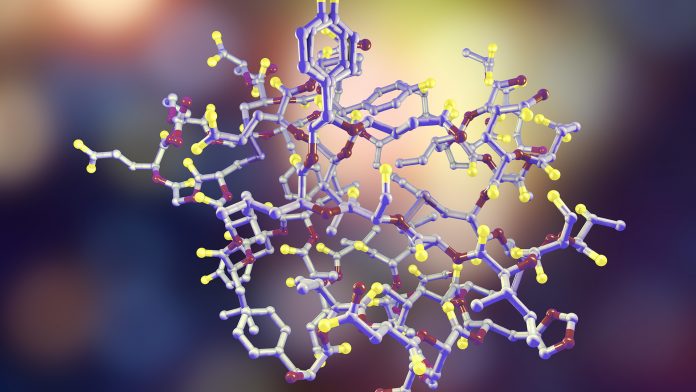
Scientists are using 3D printing technology and smart biomaterials to create an insulin-producing implant for people with Type 1 diabetes.
Bioengineers from Rice University, in Houston, Texas, will use insulin-producing beta cells made from human stem cells to create an implant that senses and regulates blood glucose levels by responding with the correct amount of insulin at a given time.
The three-year research project is between the laboratories of Omid Veiseh and Jordan Miller and supported by a grant from JDRF, a leading global funder of diabetes research. Veiseh, an assistant professor of bioengineering, has over a decade of experience developing biomaterials that protect implanted cell therapies from the immune system. Miller, an associate professor of bioengineering, has spent over 15 years researching techniques to 3D print tissues with vasculature, or networks of blood vessels.
Type 1 diabetes is an autoimmune condition that causes the level of glucose in the blood to fall or rise to dangerous levels. This happens because the condition prevents the pancreas from producing enough insulin to properly regulate blood glucose. Currently, controlling blood glucose as a Type 1 diabetic requires daily insulin injections or wearing an insulin pump.
Replicating pancreas functioning
Veiseh said: “If we really want to recapitulate what the pancreas normally does, we need vasculature.
“And that’s the purpose of this grant with JDRF. The pancreas naturally has all these blood vessels, and cells are organised in particular ways in the pancreas. Jordan and I want to print in the same orientation that exists in nature.”
To test the implants first, the researchers will survey their efficacy in regulating the blood glucose levels of mice for at least six months. To do this, they will need to ensure their engineered beta cells can respond to rapid changes in blood sugar levels.
“We must get implanted cells in close proximity to the bloodstream so beta cells can sense and respond quickly to changes in blood glucose,” Miller said.
Miller added that insulin-producing cells should be no more than 100 microns from a blood vessel.
“We’re using a combination of pre-vascularisation through advanced 3D bioprinting and host-mediated vascular remodelling to give each implant several shots at host integration,” Miller said.
Hydrogel protection
The insulin-producing cells will be protected with a hydrogel formulation developed by Veiseh, who is also a Cancer Prevention and Research Institute of Texas Scholar. The hydrogel material, which has proven effective for encapsulating cell treatments in bead-sized spheres, has pores small enough to keep the cells inside from being attacked by the immune system but large enough to allow for the passage of nutrients and insulin.
The researchers noted that, if the implant is too slow to respond to high or low blood sugar levels, the delay can produce a roller-coaster-like effect, where insulin levels repeatedly rise and fall to dangerous levels.
“Addressing that delay is a huge problem in this field,” Veiseh said. “When you give the mouse — and ultimately a human — a glucose challenge that mimics eating a meal, how long does it take that information to reach our cells, and how quickly does the insulin come out?”
By incorporating blood vessels in their implant, Veiseh and Miller hope to enable the beta-cell tissues to behave in a way that more closely mimics the natural behaviour of the pancreas.









